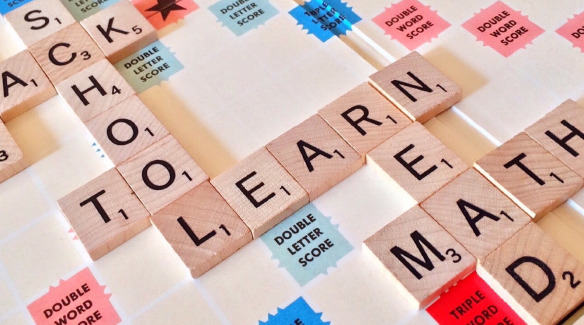Dyslexia

What is dyslexia?
Dyslexia is a learning disorder that is characterized by a severe problem with reading and writing. When someone has dyslexia, this person will experience difficulties with reading fast and accurately, but also with spelling. According to the Dutch Dyslexia Association (Stichting Dyslexie Nederland (SDN), 2016), dyslexia is defined as:
“a specific learning disorder that is characterized by persistent problems in learning to read fluently and accurately and/or to spell at the word level. These difficulties are not the result of environmental factors and/or a neurological, physical or general intellectual disability”.
An important feature of dyslexia is that difficulties with reading or spelling are not caused by another disorder. People with dyslexia generally have an average IQ and perform equally on tasks that do not involve reading and/or spelling as people without dyslexia. This does not mean that people with a high or low IQ cannot have dyslexia. Dyslexia must therefore be seen as an independent phenomenon (Snowling et al., 2020).
There are several theories about the cause of dyslexia. The more traditional theories assumed a single deficit. This means that there is one underlying disorder that causes dyslexia. A prominent single deficit approach is the phonological core deficit theory (Ziegler & Goswami, 2005), which proposes that the underlying causes of dyslexia can be explained by a deficit in phonological processing. This means that individuals with dyslexia have more difficulty converting letters into the correct sounds. Today’s theories assume that there are multiple risk factors that can lead to dyslexia. Several studies have shown that people with dyslexia do not all have the same underlying disorders. These underlying risk factors may differ per person (Pennington, 2006).

It is estimated that dyslexia occurs in 3 to 10% of the population. Not much is yet known about the cause of dyslexia. However, there are many studies that have shown that dyslexia
can be hereditary. For example, twin studies have shown that identical twins are more likely to both have dyslexia than fraternal twins (DeFries & Alarcón, 1996). In addition, children are more likely to have dyslexia if one of their parents also has dyslexia. When one of the parents has dyslexia, there is a 31 to 62% chance that the child will also have dyslexia (Grigorenko, 2001).
Dyslexia in higher education
The profile of an adult with dyslexia looks different from the profile of a child with dyslexia. For children, poor accuracy, slow reading, and phonological awareness (the ability to recognize and manipulate individual sounds in spoken words) are the main difficulties. It is a lot more difficult to identify dyslexia, but it still occurs. You often see that students in higher education are able to read quite accurately, but that their reading pace is two to three times slower than that of their fellow students. A study by Swanson & Hsieh (2009) concluded that students with dyslexia experience the most difficulties with word reading, spelling and phonological processing. These students scored the same as students without dyslexia in the areas of general intelligence, problem solving ability, visual perception, and auditory and social skills. A study by Callens et al. (2012) showed that students with dyslexia have more difficulties with reading and writing. These students were especially slower at reading and writing. They did not necessarily make more errors in reading than students without dyslexia, but in spelling the difference in errors was significant.
There are a lot of students with dyslexia who only discover that they have dyslexia in higher education, because they have always been able to compensate for their reading and spelling deficits in the past. This may only be experienced as a problem when the student starts studying at university, because the workload in university is higher than in secondary education. The student may notice this when they do not have enough time to read the assigned literature, keep up with the course material, or do not have enough time for their exams. Students with dyslexia often experience fewer problems with spelling, but this could be because programs like Word and Google Docs have a spelling check and a lot of studying is done on the computer at university.
At the university, a lot of education is offered in English. It can be difficult for students with dyslexia, who are not native speakers of English, to receive academic education if they do not speak English well enough to understand the lectures (Rouweler, 2021). According to the Linguistic Coding Differences Hypothesis (Sparks & Ganschow, 1991), you could only master a second language well if you have already mastered your first language. This would mean that people with dyslexia, who experience difficulties in their native language, will experience similar problems in English. Furthermore, English has been considered a language with a deeper orthography. This means that it is less easy to deduce how to write certain sounds in English, because there are often many options for writing a specific sound. In a more transparent language, like Dutch, it is often clearer to hear how a word should be written. This can make it more difficult for students with dyslexia to write correctly in English.

References
-
Borleffs, E., Maassen, B.A.M., Lyytinen, H. & Zwarts, F. (2017). Measuring orthographic transparency and morphological-syllabic complexity in alphabetic orthographies: a narrative review. Reading and Writing 30, 1617–1638.
-
Callens, M., Tops, W., & Brysbaert, M. (2012). Cognitive profile of students who enter higher education with an indication of dyslexia. PloS one, 7(6), e38081.
-
DeFries, J. C., & Alarcón, M. (1996). Genetics of specific reading disability. Mental Retardation and Developmental Disabilities Research Reviews, 2(1), 39-47.
-
Grigorenko, E. L. (2001). Developmental dyslexia: An update on genes, brains, and environments. Journal of Child Psychology and Psychiatry, 42(1), 91-125.
-
O'Rourke, L., Connelly, V., Barnett, A., & Afonso, O. (2020). Use of Spellcheck in Text Production by College Students with Dyslexia. Journal of Writing Research, 12(1).
-
Pennington, B. F. (2006). From single to multiple deficit models of developmental disorders. Cognition, 101(2), 385-413.
-
Rouweler, L. L. M. (2021). The impact of dyslexia in higher education [Dissertation]. University of Groningen.
-
SDN, De Jong, P. F., De Bree, E. H., Henneman, K., Kleijnen, R., Loykens, E. H. M., Rolak, M., Struiksma, A. J. C, Verhoeven, L., & Wijnen, F. N. K. (2016). Dyslexie: diagnostiek en behandeling. Brochure van de Stichting Dyslexie Nederland
-
Snowling, M. J., Hulme, C., & Nation, K. (2020). Defining and understanding dyslexia: past, present and future. Oxford Review of Education, 46(4), 501–513.
-
Sparks, R. L., & Ganschow, L. (1991). Foreign language learning differences: Affective or native language aptitude differences?. The modern language journal, 75(1), 3-16.
-
Swanson, H. L., & Hsieh, C. J. (2009). Reading disabilities in adults: A selective meta-analysis of the literature. Review of Educational Research, 79(4), 1362-1390.
-
Ziegler, J. C., & Goswami, U. (2005). Reading acquisition, developmental dyslexia, and skilled reading across languages: a psycholinguistic grain size theory. Psychological bulletin, 131(1), 3.
